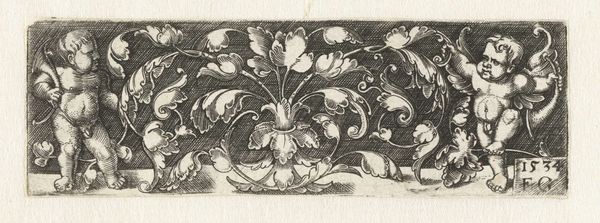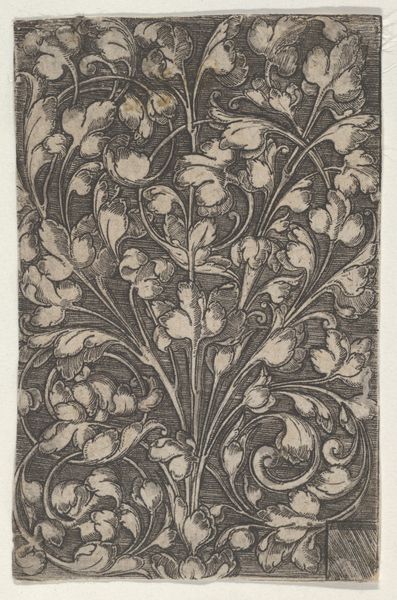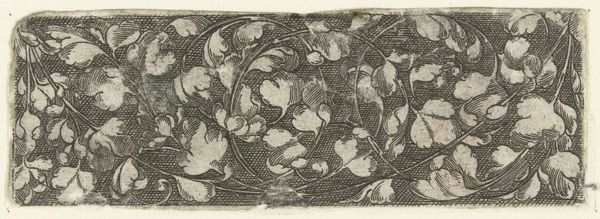
Bladranken, ontspruitend vanuit het midden en vanuit beide uiteinden van het fries 1500 - 1600
0:00
0:00
drawing, ink, woodcut
#
drawing
#
pen drawing
#
pen illustration
#
pen sketch
#
ink line art
#
11_renaissance
#
ink
#
geometric
#
pen-ink sketch
#
woodcut
#
pen work
#
sketchbook drawing
#
coloring book page
#
doodle art
#
intricate and detailed
Dimensions: height 23 mm, width 53 mm
Copyright: Rijks Museum: Open Domain
Editor: This delicate pen and ink drawing, "Bladranken, ontspruitend vanuit het midden en vanuit beide uiteinden van het fries," which translates to "Foliage sprouting from the middle and from both ends of the frieze," is estimated to be from 1500 to 1600. It is unsigned. I am struck by how precisely ordered, yet how organic the floral composition appears. How might this piece have been received during the Renaissance? Curator: That's a wonderful observation. Consider the Renaissance's burgeoning interest in the natural world and the revival of classical forms. A drawing like this, intended perhaps as a model for ornamentation, reflects both. Ornamentation held political and social weight; think of whose garments displayed certain motifs. This design likely offered a versatile template. What purpose might something like this have served beyond simple decoration? Editor: Well, looking at the repeating pattern and meticulous details, I'm wondering if it was a preparatory design. Perhaps for textiles or even architectural decoration? It feels like a very public declaration, if it was on display. Curator: Exactly. During the Renaissance, visual motifs weren't merely aesthetic; they were powerful signifiers. Certain families adopted signature floral or animal designs, imbuing objects and even buildings with layers of meaning. Would it change your perception if I suggested that seemingly simple, elegant decoration had strong symbolic functions and reinforced social structures of the time? Editor: Absolutely! I had thought of decoration as purely decorative, but knowing its use within a specific society and timeframe allows me to look for political messaging and symbolism, making it far more intriguing. Curator: Precisely! Remember, understanding art always requires contextualizing it within its social, political, and historical framework. The drawing ceases to be merely ‘pretty’ and transforms into a historical document. Editor: This discussion has opened my eyes. It’s more than just the artwork itself. I must consider all the factors that shape it. Thank you for broadening my perspective.
Comments
No comments
Be the first to comment and join the conversation on the ultimate creative platform.













